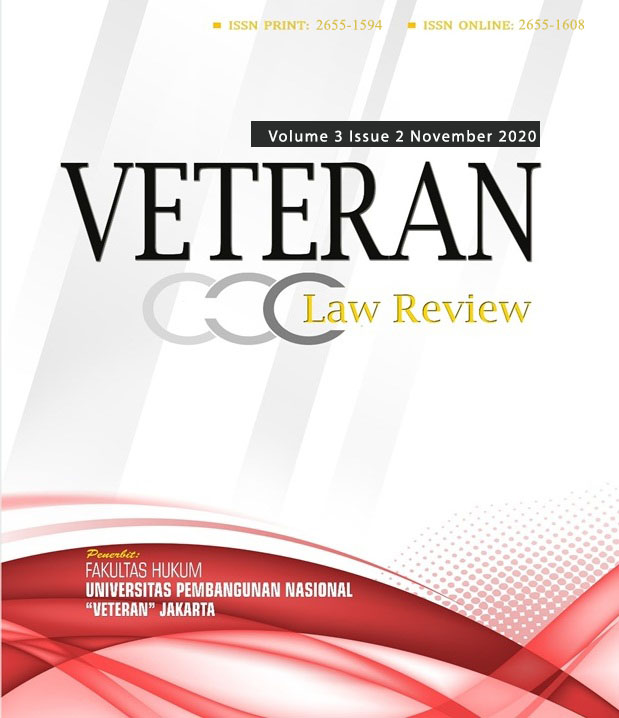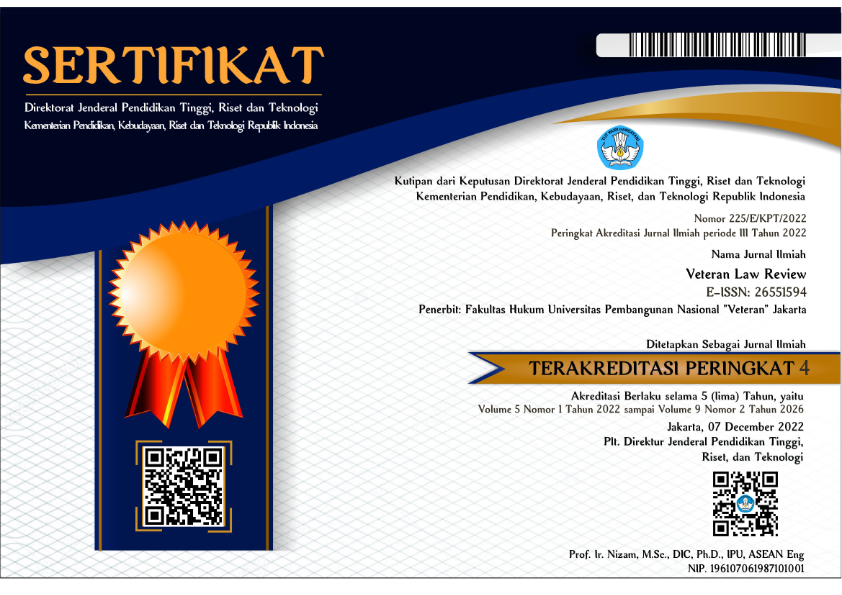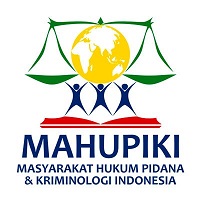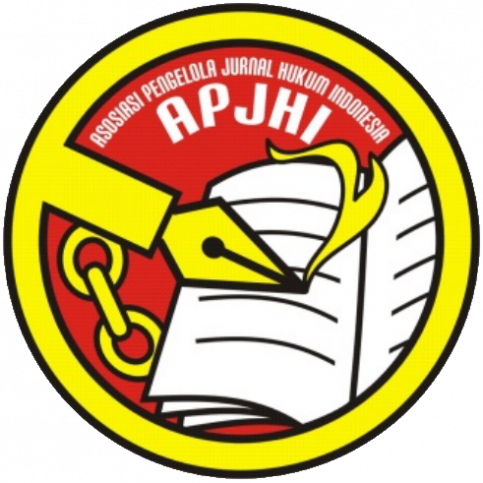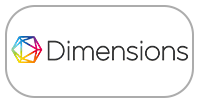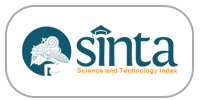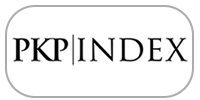Legal Impact From Lambe Turah Account Relating To Article Of Insult And Prohibited Conduct
DOI:
https://doi.org/10.35586/velrev.v3i2.2212Abstract
Instagram is an information dissemination platform that is very attractive to Indonesians. The popularity of the Lambe Turah gossip account on social media Instagram is not necessarily free from the applicable legal rules, that all social media activities related to insulting and spreading the privacy of others is a violation that refers to the Criminal Code and the Law Information and Electronic Transactions. The research method in this scientific work is a normative-juridical study, using the statute approach and analyzed qualitatively. Lambe Turah's "Hengpon Jadul" content is unlawful because it has spread the personal information of others which often results in hate speech comments from followers, which can lead to defamation. The anonymity used by the Lambe Turah admin can be revealed with the help of the Cyber and Code National Agency or in collaboration with related social media companies. So that something similar does not happen again, law enforcement should be able to supervise entertainment accounts on social media.
Keywords: Lambe Turah, Spread of Privacy, Anonymity.
Downloads
References
Books with an author:
Asikin, Zainal & Amiruddin. (2006). Pengantar Metode Penelitian Hukum. Jakarta: PT. Raja Grafindo.
Arikunto, Suharsimi. (2000). Prosedur Penelitian Suatu Pendekatan Praktek. Jakarta: Rineka Cipta.
Hadi, Sutrisno. (1980). Metodologi Research 1. Yogyakarta: Gajah Mada.
Lipschultz, Jeremy Harris. (2017). Social Media Communication: Concepts, Practices, Data, Law and Ethics. New York: Routledge.
Soekanto, Soerjono. (2015). Pengantar Penelitian Hukum. Jakarta: UI-Press.
Soemitro. (1990). Metodologi Penelitian Hukum. Jakarta: Rineka Cipta.
Soemitro. (1998). Metodologi Penelitian Hukum dan Jurimetri. Jakarta: Ghalia Indonesia.
Rice, Stephen K & Parkin, William S. (2016). Social Media and Law Enforcement Investigations. Oxford: Oxford University Press.
Journal Articles:
Brown, Brian A. (2013). Primitive Digital Accumulation: Privacy, Social Network, and Biopolitical Exploitation. Rethinking Marxism. 25(3).
Chirita, Anca D. (2018). The Rise of Big Data and the Loss of Privacy. Springer Nature.
Bond, D & Crawford, K. (2011). Six Provocations for Big Data. SSRN eLibrary.
Gedik, B. & Liu, L. (2008). Protecting Location Privacy with Personalized Anonymity: Architecture and Algorithms. IEEE Transactions on Mobile Computing. 7(1). 5.
Hasfi, Nurul, Usmand, Sunyoto & Santosa, Hedi Pudjo. (2017). Anonimitas di Media Sosial: Sarana Kebebasan Berekspresi atau Patologi Demokrasi?. Jurnal Ilmu Komunikasi. 15 (1). 28.
Indika, Deru R & Jovita, Cindy. (2017). Media Sosial Instagram Sebagai Sarana Promosi untuk Meningkatkan Minat Beli Konsumen. Jurnal Bisnis Terapan. 1(1). 25.
Irawan. (2018). Hate Speech di Indonesia: Bahaya dan Solusi. Jurnal Dakwah dan Pengembangan Sosial Kemanusiaan. 9(1). 5.
Ismail, Mohd Ishak., Rahman, Md Arafatur & Azad, Saiful. (2016). Exploiting Privacy Policy and Management Features on Social Networks: A User’s Perspective. International Conference on Computer & Communication Engineering. 66.
Markell, Patchen. (2015). Anonymous Glory. European Journal of Political Theory.
Marwick, Alice., Fontaine, Claire & Boyd, Danah. (2017). ‘Nobody Sees It, Nobody Gets Mad’: Social Media, Privacy, and Personal Responsibility Among Low-SES Youth. Social Media + Society. 1.
Rakhmawati, Nur Aini, et al. (2019). Konsep Perlindungan Hukum Atas Kasus Pelanggaran Privasi Dengan Pendekatan Perundang-undangan dan Pendekatan Konseptual. Justitia Jurnal Hukum. 3(2). 299.
Santoso, Amanda P., Baihaqi, Imam & Persada, Satria F. (2017). Pengaruh Konten Post Instagram terhadap Online Engagement: Studi Kasus Pada Lima Merek Pakaian Wanita, Jurnal Sains dan Seni ITS. 6(1). D-51.
Sarikakis, Katharine & Winter, Lisa. (2017). Social Media Users’ Legal Consciousness About Privacy, Social Media + Society. 1-2.
Smith, Matthew., Szonggot, & Voigt, Von. (2012). Big Data Privacy Issues in Public Social Media. IEEE International Conference on Digital Ecosystems and Technologies. 1.
Sorell, Tom. (2015). Human Rights and Hacktivism: The Cases of Wikileaks and Anonymous. Journal of Human Rights Practice. 7(3).
Sutantohadi, Alief & Wakhidah, Rokhimatul. (2017) “Bahaya Berita Hoax Dan Ujaran Kebencian Pada Media Sosial Terhadap Toleransi Bermasyarakat”. Jurnal Pengabdian Kepada Masyarakat. 1(1).
Taddicken, Monika. (2014). The ‘Privacy Paradox’ in the Social Web: The Impact of Privacy Concerns, Individual Characteristics, and the Perceived Social Relevance on Different Forms of Self-Disclosure. Journal of Computer-Mediated Communication. 249.
Yuliana, Margaretha Evi & Nugrahaningsih, Widi. (2017). Ujaran Kebencian Dalam Komentar Akun Instagram. Seminar Nasional Teknologi Informasi dan Bisnis. 276.
Website Material:
Jayani, Dwi Hadya. (2020). 10 Media Sosial yang Paling Sering Digunakan Di Indonesia (Databoks). Retrieved March 13, 2020 from https://databoks.katadata.co.id/datapublish/2020/02/26/10-media-sosial-yang-paling-sering-digunakan-di-indonesia
Putri, Restu Diantina. (2010). Di Balik Cara Kerja Lambe Turah dan Akun Gosip Lain (Titro). Retrieved March 11, 2020 from https://tirto.id/di-balik-cara-kerja-lambe-turah-dan-akun-gosip-lain-dbqh
Magazine / Newspaper Articles:
Isaak, Jim & Hanna, Mina J. (2018, Agustus). User Data Privacy: Facebook, Cambridge Analytica, and Privacy Protection. The Policy Corner.
Wong, Kaze., et. al. (2014, September/October). Trust and Privacy Exploitation in Online Social Networks. Consumerization of It.
Law & Regulation:
Indonesia, Kitab Undang-Undang Hukum Pidana.
Indonesia, Undang-Undang Nomor 11 Tahun 2008 Tentang Informasi dan Transaksi Elektronik.
Indonesia, Undang-Undang Nomor 19 Tahun 2016 Tentang Perubahan Atas Undang-Undang Nomor 11 Tahun 2008 Tentang Informasi dan Transaksi Elektronik.
Downloads
Published
How to Cite
Issue
Section
License
Copyright (c) 2022 Veteran Law Review Journal
Veteran Law Review © 2022 by Faculty of Law Universitas Pembangunan Nasional "Veteran" Jakarta is licensed under Creative Commons Attribution 4.0 International

1. License
The non-commercial use of the article will be governed by the Creative Commons Attribution license as currently displayed on Creative Commons Attribution 4.0 International.
2. Author(s)' Warranties
The author warrants that the article is original, written by the stated author(s), has not been published before, contains no unlawful statements, does not infringe the rights of others, is subject to copyright that is vested exclusively in the author, and free of any third party rights, and that any necessary written permissions to quote from other sources have been obtained by the author(s).
3. User/Public Rights
VELREV's spirit is to disseminate articles published are as free as possible. Under the Creative Commons Attribution-ShareAlike 4.0 International License. VELREV permits users to copy, distribute, display, and perform the work for non-commercial purposes only. Users will also need to attribute authors and VELREV to distributing works in the journal and other media of publications.
4. Rights of Authors
Authors retain all their rights to the published works, such as (but not limited to) the following rights;
- Reproduce the work
- Prepare derivative works based upon the work
- Distribute copies of the work
- Perform the work publicly
- Display the work publicly
- Copyright and other proprietary rights relating to the article, such as patent rights,
- The right to self-archive the article,
- The right to enter into separate, additional contractual arrangements for the non-exclusive distribution of the article's published version (e.g., post it to an institutional repository or publish it in a book), with an acknowledgement of its initial publication in this journal (Veteran Law Review).
5. Co-Authorship
If the article was jointly prepared by more than one author, any author submitting the manuscript warrants that he/she has been authorized by all co-authors to be agreed on this copyright and license notice (agreement) on their behalf, and agrees to inform his/her co-authors of the terms of this policy. VELREV will not be held liable for anything that may arise due to the author's internal dispute. VELREV will only communicate with the corresponding author.
6. Royalties
Being an open accessed journal and disseminating articles for free under the Creative Commons license term mentioned, author(s) are aware that VELREV entitles the author(s) to no royalties or other fees.
7. Miscellaneous
VELREV will publish the article (or have it published) in the journal if the article’s editorial process is successfully completed. JOSI's editors may modify the article to a style of punctuation, spelling, capitalization, referencing, and usage that deems appropriate. The author acknowledges that the article may be published so that it will be publicly accessible and such access will be free of charge for the readers as mentioned in point 3.

